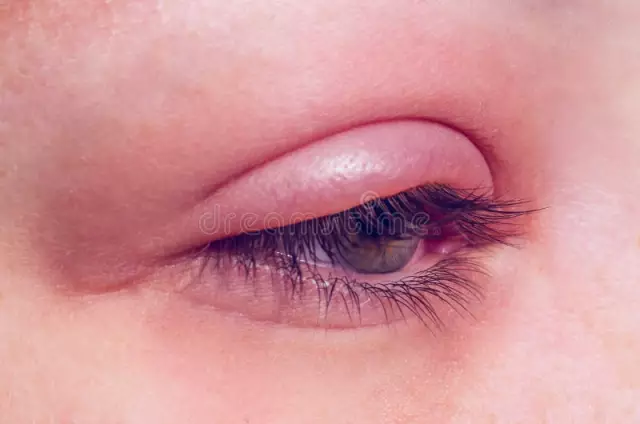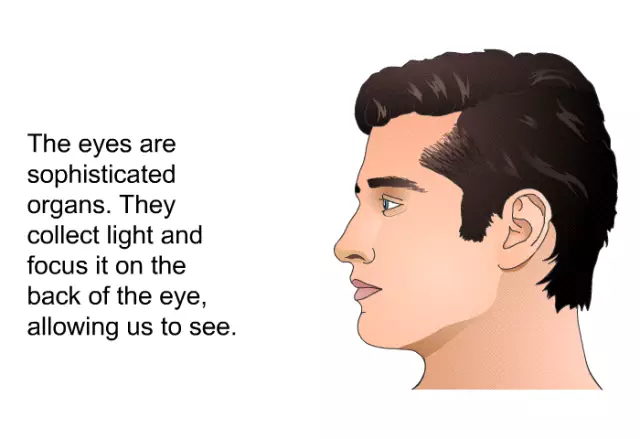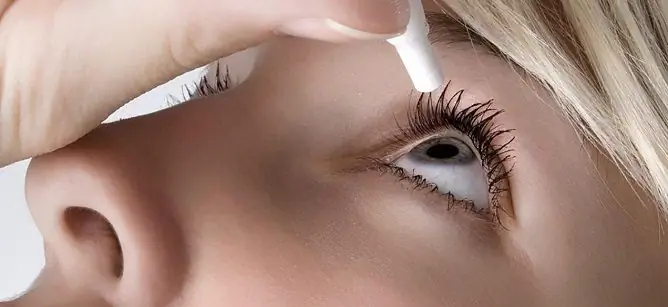- Author Rachel Wainwright [email protected].
- Public 2023-12-15 07:39.
- Last modified 2025-11-02 20:14.
DuoTrav
DuoTrav: instructions for use and reviews
- 1. Release form and composition
- 2. Pharmacological properties
- 3. Indications for use
- 4. Contraindications
- 5. Method of application and dosage
- 6. Side effects
- 7. Overdose
- 8. Special instructions
- 9. Application during pregnancy and lactation
- 10. Use in childhood
- 11. Drug interactions
- 12. Analogs
- 13. Terms and conditions of storage
- 14. Terms of dispensing from pharmacies
- 15. Reviews
- 16. Price in pharmacies
Latin name: Duotrav
ATX code: S01ED51
Active ingredient: Timolol (Timolol), Travoprost (Travoprost)
Producer: sa ALCON-COUVREUR nv (Belgium)
Description and photo update: 18.10.2018
Prices in pharmacies: from 430 rubles.
Buy

DuoTrav is a combined antiglaucoma drug.
Release form and composition
Dosage form DuoTrava - eye drops: transparent or slightly opalescent solution from light yellow to colorless (2.5 ml in a polypropylene dropper bottle, in an individual foil sachet 1 bottle, in a cardboard box 1 or 3 sachets).
1 ml drops contain:
- active ingredients: travoprost - 0.04 mg, timolol maleate - 6.8 mg (which is equivalent to 5 mg of timolol);
- auxiliary components: boric acid, macrogol glyceryl hydroxystearate, mannitol, propylene glycol, sodium chloride, polydronium chloride, hydrochloric acid or sodium hydroxide (to adjust acidity), purified water.
Pharmacological properties
Pharmacodynamics
Travoprost is a synthetic analogue of prostaglandin F2-alpha, a highly selective agonist of prostaglandin FP receptors. By increasing the outflow of aqueous humor, it helps to reduce intraocular pressure. Its main mechanism of action is an increase in uveoscleral outflow. It has no significant effect on the production of aqueous humor.
Timolol is a non-selective beta-adrenergic receptor blocker without sympathomimetic activity. The substance has no membrane stabilizing activity, it does not have a direct depressive effect on the myocardium. When applied topically, it reduces the formation of aqueous humor and slightly increases its outflow, causing a decrease in intraocular pressure. After application, the effect occurs in about 2 hours and reaches its maximum after 12 hours. After a single instillation, a significant drop in intraocular pressure can last for 24 hours.
Pharmacokinetics
The absorption of travoprost and timolol occurs through the cornea of the eye.
In the cornea, travoprost is hydrolyzed to a biologically active form - travoprost free acid. Free acid travoprost is excreted from blood plasma within an hour, and its concentration decreases below the detection threshold.
After topical application, the maximum concentration of timolol occurs in about 0.69 hours and remains for 12 hours until the detection threshold. The half-life of timolol is 4 hours.
Free acid travoprost (less than 2%) and its metabolites are excreted by the kidneys.
Timolol is mainly excreted by the kidneys, approximately 20% - unchanged, 80% - in the form of metabolites.
Indications for use
DuoTrav eye drops are indicated for patients with open-angle glaucoma and intraocular hypertension, resistant to monotherapy with beta-blockers and / or prostaglandin analogs, to reduce increased intraocular pressure.
Contraindications
- corneal dystrophy;
- bronchial asthma, severe chronic obstructive pulmonary disease (COPD) and other reactive pathologies of the respiratory tract;
- decompensated chronic heart failure;
- sinus bradycardia;
- cardiogenic shock;
- sick sinus syndrome (including sinoatrial block, atrioventricular (AV) block II or III degree without a pacemaker);
- severe course of allergic rhinitis;
- period of pregnancy;
- breast-feeding;
- age up to 18 years;
- hypersensitivity to the group of beta-blockers;
- individual intolerance to the components of the drug.
Care should be taken when prescribing DuoTrav to patients with open-angle glaucoma with pseudoaphakia, neovascular, closed-angle (narrow-angle) glaucoma, pseudoexfoliative glaucoma, pigmentary and congenital glaucoma, acute inflammatory pathologies of the organ of vision, pseudoaphakia with rupture of the posterior capsule of the lens macular edema, uveitis or iritis, with severe anaphylactic reactions or atopy to various allergens in history, patients with labile diabetes mellitus and prone to hypoglycemia, with hyperthyroidism, Prinzmetal's angina, planning a surgical operation.
Instructions for use of DuoGrass: method and dosage
DuoTrav eye drops are intended for topical application by instillation into the conjunctival sac of the eye. After instillation, you should press on the point of the nasolacrimal canal at the inner corner of the eye, this will reduce the risk of developing side effects of a systemic nature.
To maintain the sterility of the contents of the vial, avoid contact of the dropper tip with any surfaces and store in a tightly closed state.
Recommended dosage: 1 drop 1 time per day, the procedure is always carried out at the same time, in the morning or in the evening.
If the next dose is missed, the treatment is continued at the set time the next day.
The maximum daily dose of DuoGrass is 1 drop.
With concomitant therapy with other local ophthalmic agents to reduce intraocular pressure, the interval between the use of each of the drugs should be 5 minutes or more.
Side effects
- on the part of the organ of vision: very often - conjunctival injection; often - discomfort in the eye, pain in the eye, blurred vision, dry eye syndrome, visual disturbances, eye irritation, itchy eyes, punctate keratitis; infrequently - iritis, keratitis, blepharitis, conjunctivitis, inflammatory state of moisture in the anterior chamber, photophobia, decreased visual acuity, eye edema, asthenopia, increased eyelash growth, lacrimation, eye allergies, eyelid edema, conjunctival edema, eyelid erythema; rarely - subconjunctival hemorrhage, corneal erosion, meibomitis, crusting at the edges of the eyelids, distichiasis, trichiasis; frequency unknown - ptosis, corneal pathology, macular edema;
- mental disorders: rarely - nervousness; frequency unknown - depression;
- from the nervous system: infrequently - headache, dizziness; frequency unknown - syncope, cerebrovascular accident, paresthesia;
- from the side of the heart: infrequently - bradycardia; rarely - arrhythmia; frequency unknown - palpitations, heart failure, chest pain, tachycardia;
- from the side of the vessels: infrequently - arterial hypotension, arterial hypertension; frequency unknown - peripheral edema;
- from the immune system: hypersensitivity reactions;
- from the respiratory system: infrequently - postnasal syndrome, dyspnea; rarely - discomfort in the nose, bronchospasm, cough, dysphonia, irritation in the throat, pharyngeal-laryngeal pain; frequency unknown - asthma;
- from the hepatobiliary system: rarely - an increase in the activity of alanine aminotransferase (ALT) and aspartate aminotransferase (AST);
- from the digestive system: the frequency is unknown - dysgeusia;
- dermatological reactions: infrequently - hypertrichosis, contact dermatitis; rarely - urticaria, periocular alopecia, skin hyperpigmentation, skin discoloration; frequency unknown - rash;
- from the musculoskeletal system: rarely - pain in the limbs;
- from the urinary system: rarely - chromaturia;
- general reactions: rarely - increased fatigue, thirst.
In addition, the appearance of undesirable effects noted with travoprost monotherapy is possible:
- on the part of the organ of vision: disorders of the conjunctiva, uveitis, hyperpigmentation of the iris, folliculosis of the conjunctiva;
- dermatological reactions: skin peeling.
Adverse reactions characteristic of monotherapy with systemic beta-blockers (the frequency of their occurrence with local ophthalmic use of timolol is lower):
- on the part of the organ of vision: lacrimation, burning sensation, itching, stabbing sensation, conjunctival injection, detachment of the vitreous body after fistulizing surgery on the organ of vision, decreased sensitivity of the cornea, diplopia;
- from the digestive system: dry mouth, dyspepsia, nausea, diarrhea, dysgeusia, abdominal pain, vomiting;
- from the immune system: systemic allergic reactions (including urticaria, itching, local and generalized rash, angioedema, anaphylactic shock);
- mental disorders: insomnia, memory loss, nightmares;
- from the side of metabolism: hypoglycemia;
- from the nervous system: cerebral ischemia, worsening of symptoms and signs of myasthenia gravis;
- from the side of the vessels: coldness of the extremities, Raynaud's phenomenon;
- from the heart: palpitations, chest pain, congestive heart failure, edema, AV block, cardiac arrest;
- from the respiratory system: bronchospasm (more often with an existing bronchospastic disease);
- dermatological reactions: psoriasiform rash, aggravation of the course of psoriasis;
- from the reproductive system: decreased libido, sexual dysfunction;
- from the musculoskeletal system: myalgia;
- general reactions: asthenia.
Overdose
Symptoms: an overdose when instilled into the eye does not cause toxic effects. In case of accidental ingestion of drops inside, symptoms of an overdose of beta-blockers of a systemic nature, such as bronchospasm, arterial hypotension, bradycardia, heart failure, cardiac arrest, may appear.
Treatment for an overdose of DuoTrav: as a result of instillation - the eyes should be immediately rinsed with water; in case of accidental ingestion, symptomatic and supportive treatment is prescribed.
Hemodialysis is ineffective for the elimination of timolol.
special instructions
Consideration should be given to the absorption of travoprost and timolol into the systemic circulation. The beta-blocking effect of timolol can cause unwanted reactions from the lungs, cardiovascular system and other organs.
The advisability of prescribing beta-blockers for diseases of the cardiovascular system and arterial hypotension should be carefully weighed and options for the use of other active substances should be considered. Patients with pathologies of the cardiovascular system should be monitored for signs of deterioration and the development of adverse reactions. Due to the negative effect of beta-blockers on the time of conduction, caution should be exercised with AV block of the 1st degree.
It is recommended to use DuoTrav with caution in patients with diseases or severe disorders of peripheral circulation (including Raynaud's syndrome).
In case of disorders of the respiratory system, the patient's condition must be monitored before and during the use of timolol, since there is a risk of severe respiratory reactions, up to death from bronchospasm in bronchial asthma.
A beta-blocker can mask the signs and symptoms of acute hypoglycemia, this should be taken into account in patients with a labile course of diabetes mellitus or prone to the development of spontaneous hypoglycemia.
DuoTrav can hide the signs of hyperthyroidism.
For corneal diseases, the drug can cause dry eyes.
The presence of timolol increases the risk of choroid detachment after fistulizing eye surgery.
If the solution gets on the skin of the body, it should be thoroughly rinsed with water.
Before starting the use of DuoGrass, the patient should be warned about the risk of eye discoloration during therapy, especially if the treatment concerns only one eye. The iris discoloration process is slow and subtle during long-term treatment. Changes in eye color are more common in patients with brown eyes or with a mixed iris color (green-brown, gray-brown, blue-brown, yellow-brown).
The action of travoprost can cause a gradual change in the condition of the eyelashes, including the length, thickness, pigmentation and / or their number, as well as darkening of the skin of the periorbital region and / or eyelids.
The presence of propylene glycol in drops can cause irritation of the skin, macrogol glyceryl hydroxystearate - a reaction from the skin.
When carrying out a surgical operation, it is necessary to inform the anesthesiologist about the use of timolol.
If contact lenses are used, they should be removed before eye instillation and reinserted only 15 minutes after the procedure.
Influence on the ability to drive vehicles and complex mechanisms
Patients who, after instillation of DuoTrav, develop visual impairments (including blurred vision), should start driving vehicles and mechanisms only after full restoration of visual clarity.
Application during pregnancy and lactation
According to the instructions, DuoTrav is contraindicated during the gestation period, since travoprost has reproductive toxicity, negatively affects the course of pregnancy, the fetus and the newborn.
In addition, epidemiological studies confirm the risk of intrauterine growth retardation when taking beta-blockers orally, and the use of systemic beta-blockers by the mother before delivery can cause respiratory depression, bradycardia, hypotension, hypoglycemia in newborns. Therefore, in the case of using the drug during pregnancy in a newborn in the first days of life, the general condition should be carefully monitored.
The presence of doses of the drug that threaten the health of the child is unlikely in breast milk, however, it is not recommended to prescribe DuoTrav during breastfeeding.
Pediatric use
For children and adolescents under the age of 18, the use of drops is contraindicated.
Drug interactions
The combined composition of DuoGrass makes it necessary to take into account the interaction of each of its active components when used simultaneously with other agents.
Timolol, when combined with inhibitors of the isoenzyme CYP2D6 (including quinidine, paroxetine, fluoxetine), can cause an increase in the systemic effect of beta-blockers, such as depression, decreased heart rate.
The simultaneous use of drops with calcium channel blockers, beta-blockers, cardiac glycosides, parasympathomimetics, amiodarone and other antiarrhythmic drugs can cause an additive effect with the subsequent development of arterial hypotension and / or severe bradycardia.
Abrupt withdrawal of clonidine after combination therapy with a beta-blocker can cause the development of rebound arterial hypertension.
In the treatment of anaphylactic reactions, a decrease in beta-blockers of the response to adrenaline should be considered.
It is not recommended to prescribe two local beta-blockers or prostaglandin analogs at the same time.
Analogs
Analogs of DuoGrass are: Azarga, Arutimol, Ganfort, Glaumol, Cosopt, Dorzotimol, Kombigan, Kuzimolol, Ksalakom, Okumed, Timolol, Lanotan T, Oftimol, Oftan Timogel, Arutimol.
Terms and conditions of storage
Keep out of the reach of children.
Store at 2-25 ° C.
Shelf life - 24 months, after opening the bottle - 1 month.
Terms of dispensing from pharmacies
Dispensed by prescription.
Reviews about DuoTrava
A few reviews about DuoTrava emphasize its effectiveness.
Price for DuoTrav in pharmacies
The price of a bottle of DuoTrav is about 940 rubles.
DuoTrav: prices in online pharmacies
|
Drug name Price Pharmacy |
|
DuoTrav eye drops 2.5 ml 1 pc. 430 RUB Buy |
|
Duotrav eye drops 2.5ml 787 r Buy |

Anna Kozlova Medical journalist About the author
Education: Rostov State Medical University, specialty "General Medicine".
Information about the drug is generalized, provided for informational purposes only and does not replace the official instructions. Self-medication is hazardous to health!






